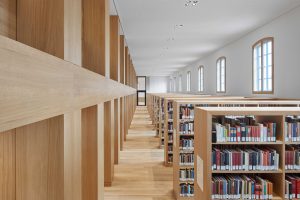Overview
Wood flooring in public libraries is a timeless choice, blending elegance with practicality. While not as common as carpet or vinyl due to cost, hardwoods like oak and maple, along with sustainable options like scrap wood, create inviting spaces. These floors withstand heavy foot traffic and enhance the serene ambiance libraries aim for.
Common Wood Types
Research suggests hardwoods such as oak, maple, beech, and birch have been used in libraries, particularly in historical contexts. Oak is prized for its strength and grain patterns, while maple’s lighter tones brighten spaces. Engineered wood, with its layered construction, offers stability in high-traffic areas.
- Oak: Strong with distinctive grain patterns.
- Maple: Light tones that brighten spaces.
- Beech and Birch: Durable and aesthetically pleasing.
- Engineered Wood: Layered for stability in high-traffic areas.
Practical and Aesthetic Benefits
Wood flooring provides insulation, reducing energy costs, and is hypoallergenic, ideal for public spaces. Its durability handles book carts and foot traffic, though harder woods like oak are preferred for scratch resistance. Aesthetically, wood’s warmth fosters a cozy, inviting environment, encouraging longer visits.
- Insulation: Reduces energy costs.
- Hypoallergenic: Ideal for public spaces.
- Durability: Handles heavy foot traffic and book carts.
- Aesthetic: Creates a warm, inviting atmosphere.





